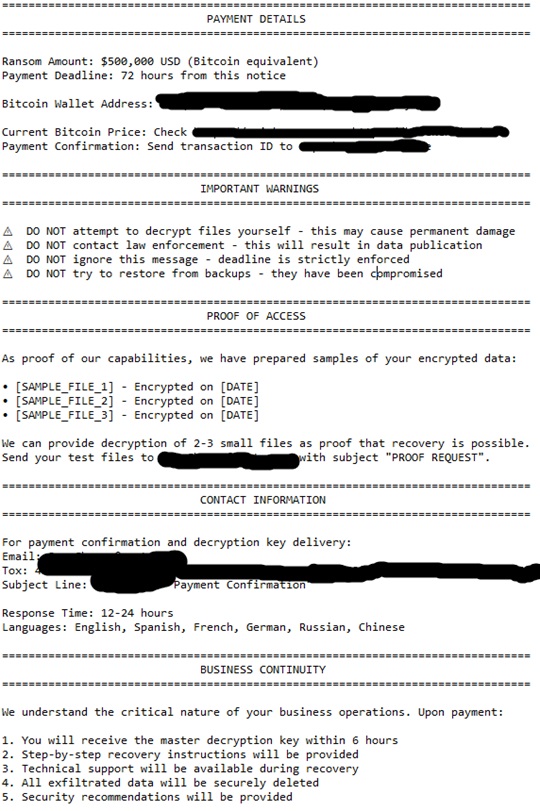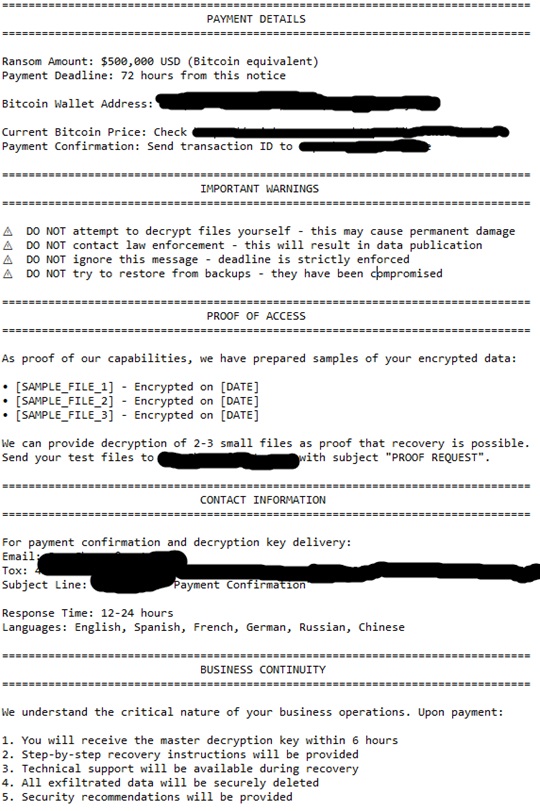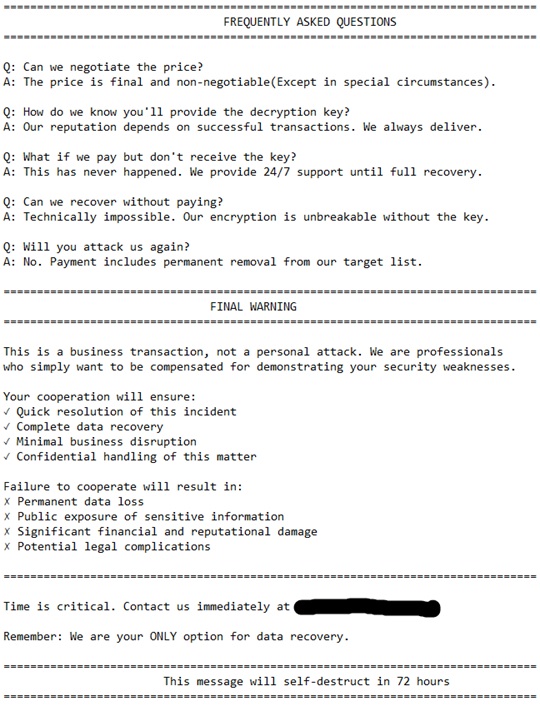Ransom.Win64.CHARON.THGBCBE
Windows


Threat Type: Ransomware
Destructiveness: No
Encrypted:
In the wild: Yes
OVERVIEW
This Ransomware arrives on a system as a file dropped by other malware or as a file downloaded unknowingly by users when visiting malicious sites.
It drops files as ransom note. It avoids encrypting files with the following file extensions.
TECHNICAL DETAILS
Arrival Details
This Ransomware arrives on a system as a file dropped by other malware or as a file downloaded unknowingly by users when visiting malicious sites.
Installation
This Ransomware adds the following mutexes to ensure that only one of its copies runs at any one time:
- OopsCharonHere
Process Termination
This Ransomware terminates the following services if found on the affected system:
- AcronisAgent
- AcrSch2Svc
- backup
- BackupExecAgentAccelerator
- BackupExecAgentBrowser
- BackupExecDiveciMediaService
- BackupExecJobEngine
- BackupExecManagementService
- BackupExecRPCService
- BackupExecVSSProvider
- CAARCUpdateSvc
- CASAD2DWebSvc
- ccEvtMgr
- ccSetMgr
- DefWatch
- GxBlr
- GxCIMgr
- GxCVD
- GxFWD
- GxVss
- Intuit.QuickBooks.FCS
- memtas
- mepocs
- PDVFSService
- QBCFMonitorService
- QBFCService
- QBIDPService
- RTVscan
- SavRoam
- sophos
- sql
- stc_raw_agent
- svc$
- veeam
- veeam
- VeeamDeploymentService
- VeeamNFSSvc
- VeeamTransportSvc
- VSNAPVSS
- vss
- YooBackup
- YooIT
- zhudongfangyu
It terminates the following processes if found running in the affected system's memory:
- agntsvc.exe
- dbeng50.exe
- dbsnmp.exe
- encsvc.exe
- excel.exe
- firefox.exe
- infopath.exe
- isqlplussvc.exe
- msaccess.exe
- mspub.exe
- mydesktopqos.exe
- mydesktopservice.exe
- notepad.exe
- ocautoupds.exe
- ocomm.exe
- ocssd.exe
- onenote.exe
- oracle.exe
- outlook.exe
- powerpnt.exe
- sqbcoreservice.exe
- sql.exe
- steam.exe
- synctime.exe
- tbirdconfig.exe
- thebat.exe
- thunderbird.exe
- visio.exe
- winword.exe
- wordpad.exe
- xfssvccon.exe
Other Details
This Ransomware does the following:
- It empties the Recycle Bin to eliminate deleted files permanently
- It removes shadow copies and backup data to prevent file recovery.
- It encrypts files based on their size using a variable encryption pattern:
- Files ≤ 64KB: Entire file is encrypted.
- Files between 64KB and 5MB: Encrypts 3 segments — start (0%), middle (50%), and end (75%).
- Files between 5MB and 20MB: Encrypts 5 evenly distributed segments across the file.
- Files >20MB: Encrypts 7 key positions — 0%, 12.5%, 25%, 50%, 75%, 87.5%, and near the end (~95%).
- It adds this specific marker to each encrypted file:
- hCharon is enter to the urworld!
- It has the capability to create a malicious service as part of its Anti-EDR strategy:
- WWC
- Executes from %System%\WWC.sys
(Note: %System% is the Windows system folder, where it usually is C:\Windows\System32 on all Windows operating system versions.)
It accepts the following parameters:
- --debug=
→ Enable logging and save to debug log - --shares=
→ Encrypt specific network shares excluding ADMIN$ - --paths=
→ Encrypt specific directories - --sf → Shares First, encrypt network shares first
Ransomware Routine
This Ransomware avoids encrypting files with the following strings in their file name:
- How To Restore Your Files.txt
It avoids encrypting files found in the following folders:
- #recycle
- $Recycle.Bin
- All Users
- AppData
- autorun.inf
- Boot
- boot.ini
- bootfont.bin
- bootmgfw.efi
- bootmgr
- bootmgr.efi
- bootsect.bak
- desktop.ini
- iconcache.db
- Internet Explorer
- Mozilla
- Mozilla Firefox
- ntldr
- ntuser.dat
- ntuser.dat.log
- ntuser.ini
- Opera
- Opera Software
- Program Files
- Program Files (x86)
- ProgramData
- thumbs.db
- Tor Browser
- Windows
- Windows.old
It appends the following extension to the file name of the encrypted files:
- .Charon
It drops the following file(s) as ransom note:
- {Encrypted Path}\How To Restore Your Files.txt



It avoids encrypting files with the following file extensions:
- .exe
- .dll
- .Charon
SOLUTION
Step 1
Trend Micro Predictive Machine Learning detects and blocks malware at the first sign of its existence, before it executes on your system. When enabled, your Trend Micro product detects this malware under the following machine learning name:
- Troj.Win32.TRX.XXPE50FFF095
Step 2
Before doing any scans, Windows 7, Windows 8, Windows 8.1, and Windows 10 users must disable System Restore to allow full scanning of their computers.
Step 3
Note that not all files, folders, and registry keys and entries are installed on your computer during this malware's/spyware's/grayware's execution. This may be due to incomplete installation or other operating system conditions. If you do not find the same files/folders/registry information, please proceed to the next step.
Step 4
Search and delete these files
- {Encrypted Path}\How To Restore Your Files.txt
Step 5
Scan your computer with your Trend Micro product to delete files detected as Ransom.Win64.CHARON.THGBCBE. If the detected files have already been cleaned, deleted, or quarantined by your Trend Micro product, no further step is required. You may opt to simply delete the quarantined files. Please check the following Trend Micro Support pages for more information:
Step 6
Restore encrypted files from backup.
Did this description help? Tell us how we did.

